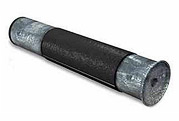
The foundational design of the compound microscope has, in many ways, remained locked in place for the 450 years of it’s existence. Combining an objective, eyepiece, and illuminator to provide a magnified view of a specimen has drastically improved. The illumination, staging, detection, optical design, and contrast methods have all evolved by leaps and bounds today. Super resolution will likely become the new normal in the next 10 years. But for all of this improvement, some of the basic limitations of the microscope remain locked in place. A further limitation is placed on development by the same names in the industry. Big name instrument manufacturers, with entrenched, slow, and top-heavy R&D divisions aren’t really set up to upset things, but instead to make small improvements over time. Sometimes it takes fresh eyes, a new way of seeing things, a new generation of builders, to break free of this incremental development cycle, to find a different way of solving the age old limitations we find in todays’ instruments.

Over the past year, I’ve been privileged to find an amazing group of young entrepreneurs, who have tirelessly worked to bring a new microscope to life. I’ve been even more honored to play a small part along the way. I’ve been chomping at the bit to share the story of this group. I’ve watched as they struggled to solve extremely difficult problems. I’ve looked into eyes not seen since I was a young grunt in the infantry, the eyes of a man who hasn’t slept in days, fighting to figure out the answer to a seemingly unanswerable question. I’ve watched as we walked through success, through failure, through disappointment, watching as one man’s imagination was brought into reality, watching as each person contributed to make something bigger, better, than any of us could imagine.
On August 1, the company will announce it’s product, and I’ll be able to tell more of the story. For today, I just want to ask a series of questions, which I plan to further explore in the days leading up to release.
- What can’t your microscope do?
- Does the instrument you use today reflect an embodiment of available consumer-grade technology?
- What is “ease of use”, how can such a phrase be quantified?
- Is faster, bigger, heavier, stronger, always better?
- Asking a tough question on mature markets and the voice of the customer.
I hope you’ll stay with me for the week. All I can promise is that will be worth the wait. I hope to at least provide an explanation on why I believe this group is on the right track, and why it’ll turn the microscopy industry on it’s head…..literally.
-Austin
Comments
2 responses to “Countdown to a Revolution in Microscopy – Day 5”
sounds like an interesting project.
Thanks Edric!